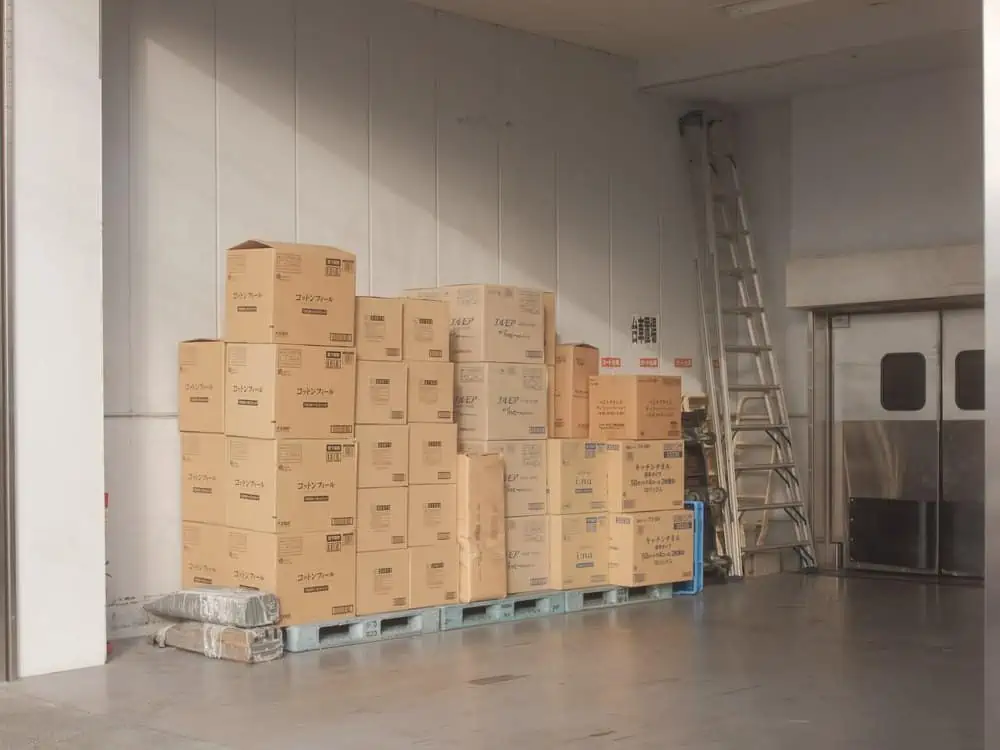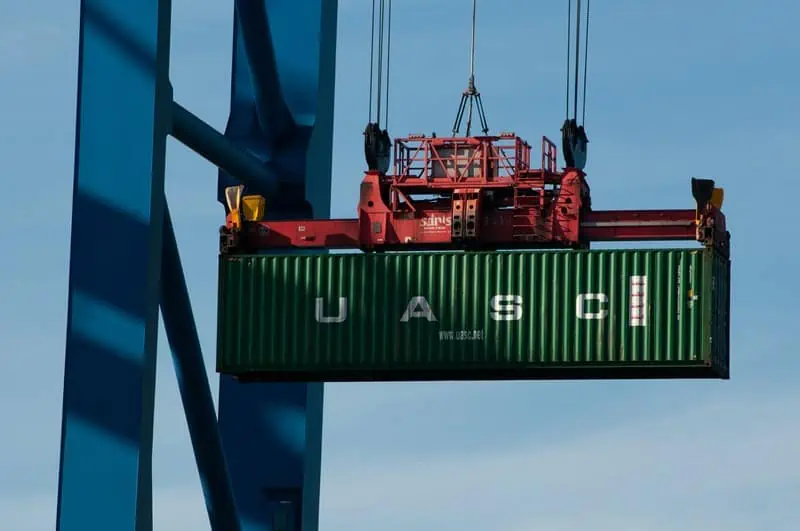Article Summary (TL;DR)
✅ Reduced workload: Sellers are relieved of managing inventory storage, packaging, and shipment.
✅ This article outlines Amazon’s FBA (Fulfillment by Amazon) service. Sellers leverage Amazon’s warehouses, packaging, and shipping for their products, allowing them to focus on other aspects of their business.
✅ Setting up an FBA account. Understanding associated fees and taxes. Complying with product restrictions. Optimizing product packaging for FBA centers.
The Amazon FBA (Fulfillment by Amazon) service enables vendors to keep their goods in Amazon’s warehouses and have Amazon fulfill orders on their behalf.
Sellers like this service because it relieves them of the responsibility of managing the storage and delivery of their products, giving them more time and resources to concentrate on other areas of their business.
However, especially for novice sellers, delivering your goods to Amazon’s warehouses can take a lot of work.
In this article, we’ll go through the essential elements of Amazon FBA shipping and offer hints for streamlining the procedure.

What Is Amazon FBA Shipping?
Amazon FBA shipping is a service that allows businesses to use Amazon’s fulfilment centers, delivery networks, and customer service to store, package, and ship orders.
It stands for “Fulfilment by Amazon” and it enables businesses to outsource their entire order fulfilment process, from inventory management to the actual shipment of products.
Using Amazon FBA shipping means businesses don’t have to worry about dealing with inventory management or packaging and shipping products. Instead, they can focus their efforts on growing their business through marketing and customer service.
The benefits also include access to Amazon’s extensive global network of delivery partners, which ensures faster delivery times for customers.
For new or established FBA sellers, there are plenty of resources available online.
These provide helpful advice on everything from setting up your account correctly, understanding fees and taxes, learning about product restrictions and requirements for different countries, knowing what kind of packaging works best for each product type, and tips for optimizing your storage space at fulfillment centers.
Benefits Of Using Amazon FBA Shipping
By relying on Amazon’s expertise in shipping, managing and tracking shipments, you can leverage Amazon’s distribution network and operations.
Yes it’s not free or cheap, but it will be more expensive if you tried to do it on your own. Especially for small parcel delivery which is very expensive.
Additionally, using Amazon FBA also provides businesses with access to a global network of fulfillment centers that you can use for multi-channel fulfillment orders.
If you sell on Shopify or Wodpress, you can fulfill orders through Amazon fulfillment centers. Go into Amazon seller account, create a shipment and that’s it.
Amazon handles fulfillment of your order whether it’s a small parcel delivery or a big oversized delivery.
The biggest benefit is the trust that people place on Amazon.
People have come to rely on the speed and order fulfillment experience. Since Amazon handles all aspects of shipping, from processing orders to ensure that packages arrive safely and on time, customers know they can count on getting their purchases quickly and without any issues.
Amazon’s shipping service is not perfect.
There can be delays, lost inventory, and more. But it also happens to you.
- Problems with managing inventory yourself
- bad shipping plan
- incorrect data entered into the FBA shipment details
- wrong print labels
- and not being able to find a cheaper carrier than an Amazon partnered carrier
Tips For Packing And Labeling Your Products

When it comes to shipping products, packing and labeling your items is of utmost importance. It’s essential to make sure you properly identify what’s in each package – both for the safety of the contents and for customs clearance.
There are a few tips you can use to ensure that your products reach their destination safely and securely.
First, use quality packaging materials like corrugated cardboard or bubble wrap, depending on the item.
You should also avoid overstuffing packages – this can cause them to burst open during transit, resulting in damaged goods.
Additionally, consider adding extra cushioning material inside the package if the product is fragile or delicate.
Labeling is also essential; make sure all of your packages have clear labels with relevant information such as contents, a destination address, customer name and contact info, and any other pertinent details.
You should also include a return address label in case your shipment gets lost along the way. Following these steps will help ensure that your shipments arrive on time and without incident.
Shipping Your Products to Amazon
You can send your goods to Amazon’s warehouses once they are ready for delivery. You may develop shipment strategies and generate shipping labels using Amazon’s shipping tool.
You can use this tool to choose the warehouse where you want to send your goods as well as the quantity you are sending. It vastly simplifies the shipping process.
Creating a Shipping Plan
A shipping plan is a collection of guidelines that specify the items you are shipping and their destination to Amazon. It helps streamline FBA shipment.
You must identify the warehouse to which you want to send your goods, the quantity you are sending, and the carrier you intend to use before you can construct a shipping plan.
Generating Shipping Labels
You can produce shipping labels for your products once your shipment plan has been created. You will receive the required labels from Amazon’s shipping tool, which you must apply to your parcels before they are delivered.
To help ensure that your products are transported to the right warehouse, it is crucial to ensure the labels are affixed accurately and securely.
Find the Shipping Location and Make Any Necessary Changes
Select between Inventory Placement Service and Distributed Inventory Placement. The modifications can be found in Settings. Click on Inbound Settings under Fulfillment by Amazon.
Since distributed inventory placement is the default, they may ask you to ship various quantities of goods to various warehouses.
Choose the Inventory Placement Service if you want to ensure that all your things are delivered to one place. The cost (as of this writing) is $0.30 for items weighing less than a pound and $0.40 for items weighing more than a pound.
Select the Shipping Service
Choose between “Less Than Truckload” and “Small Parcel Delivery” for shipments involving pallets weighing more than 150 pounds each.
Choose between an “Amazon-Partnered Carrier” and “Other Carrier” as your shipping carrier.
Put the weight and size tier of the shipment together with the number of units in each box and the total number of boxes. To obtain the price of an Amazon fulfillment center, click Calculate.
Select the delivery day, then print the labels. Ensure that you can see both of the barcodes you get. One is for Amazon, and the other is for the shipping service.
Press Shipment Complete. Done!
Using A Third-Party Logistics Provider

Using a third-party logistics (3PL) provider is a great way to simplify FBA shipments and the whole process. With an experienced and reliable 3PL, you can have them take care of the packing and labeling of your products.
This also gives you more control over your inventory, so you can manage any fluctuations in customer demand.
The advantages of using a 3PL are numerous. For instance, you’ll be able to access their network of warehouses across the country or even worldwide, giving you greater flexibility in meeting customer needs.
You’ll also benefit from their experience in handling orders, with services like order fulfillment and tracking available to give you peace of mind.
Moreover, they can provide timely customer service and quick shipping times for customers needing it most.
Overall, leveraging a third-party logistics provider can be an excellent way to streamline your Amazon FBA shipping process and ensure that your customers get their orders quickly and efficiently.
As long as you do your research on the best providers out there, it’s something that could really benefit both you and your customers alike.
Calculating Shipping Costs
The cost of shipping an item depends on its size and weight and the distance it needs to travel. The cost also varies depending on whether you’re using a third-party logistics provider or not.
If you’re using a third-party provider, they will typically cover your shipping costs. However, if you’re opting to do it yourself, then the cost will have to be factored into your overall budget.
It’s also important to consider any additional fees associated with shipping. These can include packaging materials and insurance costs, which can add up quickly if not accounted for in advance.
Ultimately, calculating shipping costs is a critical step in making sure that your Amazon FBA guide is successful and cost-effective. By understanding these factors ahead of time, you’ll be able to select the best option for your needs.
Strategies For Reducing Shipping Costs
Here are just a few of the ways you can reduce costs while fulfilling orders:
- Consider using an alternate shipping carrier. By shopping around for the best deal, you may find that a different carrier offers cheaper rates or faster service than your current provider.
- Take advantage of volume discounts. Working out bulk deals with carriers can result in significant savings over time.
- Negotiate rates with carriers yearly or even quarterly. Rates often change depending on market conditions and other factors so make sure to keep up with these changes and negotiate accordingly.
- Optimize packaging to reduce weight and size as much as possible. This will help you avoid paying extra for bulky or overweight packages, resulting in lower transportation costs overall.
- Ship items directly from the manufacturer instead of going through a warehouse or fulfillment center first if possible – this will cut down on additional handling fees and other associated costs as well as saving time in getting the product to its destination quickly and efficiently.
Tracking Your Shipments
To make sure your shipments are tracked properly, here’s what you need to do:
- Determine the best shipping method for your budget and product needs. You can choose from various options such as standard ground shipping, expedited services, or even international shipping. Consider factors like cost and transit times when making your decision.
- Many carriers have their own tools that allow you to track shipments in real time. Utilizing these tools can give you an accurate picture of where your shipment is at any given moment.
- Use tracking numbers. It will give you proof of shipment and help with customer service if the shipment goes missing or a fraud claim is charged against you.
- Track multiple packages at once using barcodes or QR codes
- Use solutions like email notifications or SMS alerts to stay informed about each shipment
- Investigate any discrepancies between expected delivery times and actual arrival dates
- Create reports with detailed data on delivery progress and customer satisfaction levels
Insuring Your Products
Insurance ensures that you will be reimbursed for loss or damage during shipment. Here are four essential tips for insuring your products:

Confirm the insurance coverage offered by your shipper.
Most carriers offer some form of insurance, but there may be differences in terms and conditions. Before proceeding, ensure you know exactly what’s covered—and what isn’t—.
Decide who will pay for the insurance.
It’s often the shipper’s responsibility to purchase insurance, so make sure you and your shipper agree on who will pay for it upfront to avoid any confusion later on down the line.
Calculate the cost of insurance accurately.
The insurance cost should reflect the value of each shipped item, so make sure you’ve researched and have an accurate estimate before committing to anything.
Don’t forget about international shipments.
International shipments often require additional documentation and higher levels of insurance coverage, so if you’re shipping overseas, make sure to do your due diligence and get everything squared away before shipping out your goods.
Creating A Returns Process
Creating a returns process is an important part of any e-commerce business. It’s essential to put in place a clear and efficient system for managing customer returns so that customers have a positive experience with your brand.
Here’s a simple process you can implement.
Decide on the specific policy you want to put in place.
This should include details such as who pays for return shipping, what kind of refunds or store credit are available, and the time limit for customers to make returns.
It’s also important to use clear and concise language so customers can easily understand it.
Staff is properly trained on how to handle returns.
This includes knowing how to troubleshoot any issues that may arise during the process and providing helpful customer service when dealing with unhappy customers.
To help streamline this process, consider implementing automated systems such as online forms or automated emails.
Have systems of tracking returns
Three quick ways you could go about doing this:
- Use labels on packaging with unique codes or identifiers;
- Track orders through software programs;
- Create an inventory system with detailed notes on each item received back from customers.
How To Choose The Right Shipping Carrier
When selecting a carrier, consider things like delivery time, cost, package tracking and customer service.
Take into account the size and weight of your items and any special handling requirements such as temperature control or hazardous material handling.
You’ll also want to check for any extra fees that might be associated with specific types of packages or destinations.
Compare different carriers side by side and make sure you understand their terms of service before committing to one.
With careful consideration of your needs and an understanding of what each carrier has to offer, you’ll be able to find the perfect shipping solution for your business.
Understanding International Shipping Regulations

Understanding international regulations like customs, fees, import taxes, FDA, and other tariffs is a requirement for you.
It’s important to understand which countries your products can be received or shipped to and the associated costs for each region.
Additionally, you’ll need to keep in mind that different carriers may have different restrictions when it comes to shipping internationally.
If you are wanting to sell in other Amazon marketplaces and try to get it to the Amazon fulfillment center in that country, there are always different requirements or rules that may apply when shipping abroad.
Some countries have specific labeling requirements or even product restrictions that must be followed for legal shipment.
Check with the local customs office in the destination country before sending out packages, so any necessary paperwork or documents can be prepared ahead of time.
Additionally, familiarizing yourself with the timelines of international packages will help ensure they arrive at their destinations on time.
Knowing the best carriers and routes for your needs will provide you with peace of mind knowing your shipments are getting where they need to go securely and in a timely manner.
Troubleshooting Common Amazon FBA Shipping Issues
Let’s take a look at some of the most common problems with an FBA shipment and how to address them.
The first issue that often crops up is inaccurate package weight.
This can cause delays in shipment and points of confusion along the way. To avoid this, double-check your package weights before they are shipped off, and make sure to update your inventory with the correct data once you have confirmed it.
Another common problem is mislabeled packages due to the wrong print labels. When packages arrive at their destination incorrectly labeled, they won’t be able to be processed in a timely manner. You can help prevent this by double-checking all of your labels before orders are sent out and ensuring that everything is filled out accurately.
Resources For Learning More About Amazon FBA Shipping
First, there’s the official Amazon seller central website and forum. These provide detailed information on the company’s policies and procedures, as well as FAQs, videos and tutorials. They also have a section devoted just to shipping topics. It’s a great place to start if you’re new to FBA shipping.
Another excellent resource is online forums, such as Reddit or Quora, where experienced FBA sellers congregate and share their knowledge and tips with each other. Here you can ask questions and get answers from people who have been in the same boat before you. Plus, it’s an easy way to connect with like-minded individuals who are passionate about e-commerce shipping.
Lastly, don’t forget about YouTube! Many successful sellers post videos that offer step-by-step instructions on navigating Amazon FBA shipping processes. This is especially helpful when dealing with complex issues that require visual aids or tutorials to understand properly. With so many helpful videos out there, you should be able to find one that covers whatever issue you need help with.
Frequently Asked Questions
What Is The Difference Between Amazon FBA Shipping And Traditional Shipping?
Amazon FBA and traditional shipping are two very different strategies. The primary difference lies in who is responsible for the fulfillment of the orders. With Amazon FBA, Amazon takes care of all the tasks related to storing, packing and shipping the products. On the other hand, traditional shipping requires the seller to handle all aspects of fulfillment and delivery.
Another key difference between these two methods is cost. Traditional shipping typically involves more upfront costs due to packaging materials, storage space, and labor.
Additionally, sellers may encounter additional fees from carriers if their packages don’t meet certain size or weight requirements. In contrast, Amazon FBA fees are based on a combination of product size and weight, making it easier for small businesses to control their bottom line.
Your products are stored at the Amazon fulfillment center and they act like a 3PL for you.
Amazon FBA also offers several advantages that traditional shipping doesn’t have access to, such as access to Amazon’s expansive network of warehouses across multiple countries and access to Prime customers through its exclusive Prime program.
This allows sellers to take advantage of faster delivery times and better customer service than they could offer via traditional shipping alone.
Ultimately, both strategies can be effective depending on a seller’s individual needs and should be assessed individually when determining which option is best suited for them.
How Do I Know If My Product Is Eligible For Amazon FBA Shipping?
Does your product meet the eligibility requirements for FBA shipment?
This includes size and weight restrictions and restrictions on certain types of items, such as hazardous materials and food products. Additionally, certain country-specific restrictions must be considered when shipping through Amazon FBA. For example, some countries do not allow certain types of items to be shipped through the service.
Once you’ve established that your product is eligible for FBA shipment, you can begin preparing your shipment for delivery. This includes packing the item securely and labeling it correctly so that it arrives safely at its destination.
Provide accurate information regarding your shipment’s contents so that the fulfillment centers can smoothly receive and check your inventory into their system.
What Is The Typical Turnaround Time of an FBA shipment?
In general, Amazon FBA offers quite a speedy delivery timeline. If you’re sending items from within the United States, you can usually expect them to arrive in 1-3 days. International shipments may take longer, depending on the destination country. It’s also worth noting that if you’re selling bulky or heavy items, they may be subject to additional handling procedures that could cause delays.
When estimating the delivery timeline of an order, it’s important to account for any potential delays that may occur during fulfillment and transit. You should always include enough time in your estimated delivery date so that customers don’t have to wait too long for their orders to arrive.
What Are The Costs Associated With Amazon FBA Shipping?
Shipping is one of the biggest expenses for any business, and fulfillment by Amazon is no exception.
Factor in fees for receiving and storing your products at an Amazon fulfillment center. These fees vary depending on the size and weight of your products and the number of items you’re sending in.
You’ll also have to pay for shipping from your warehouse to Amazon fulfillment centers and outbound shipping fees. Finally, if you’re using a third-party logistics provider (3PL) or carrier service to ship your goods to customers, you’ll also need to consider their prices inbound and outbound.
Ultimately, it’s important to do some research and weigh all these different costs before making any decisions regarding Amazon FBA shipping. You should also be aware that these prices can change over time, so keep up-to-date with the latest information available and stay on top of any price changes.
Doing so can help ensure you get the most out of your investment in Amazon FBA shipping while maintaining a healthy profit margin.
Is Amazon FBA Shipping Available For International Orders?
One of the most important questions is whether or not it’s available for international orders. Fortunately, the answer is yes – Amazon FBA shipping does cover international orders but it’s different to FBA within the same country.
The process for international shipping is much like domestic shipping in that you’ll need to package and label each item correctly and send it to and Amazon FBA warehouse.
If you have the settings enabled in your Amazon seller central account to allow Amazon to export the product to other countries when an order comes in, then Amazon will handle the fulfillment process.
In addition, some customs duties and taxes may apply depending on the country you’re sending to but if you allow Amazon to handle it, Amazon takes care of all the customs and taxes.
Overall, Amazon FBA shipping is an excellent option for businesses looking to send orders internationally. With its convenient packaging services and reliable delivery times, there’s no reason why your business can’t reach customers all over the world. Furthermore, being aware of any additional requirements in each country will help ensure a smooth delivery process every time.
Final Words
Amazon FBA Shipping is the best option if you sell FBA. It offers faster shipping times and lower costs than traditional shipping.
Although it’s not available for B2C international orders yet, it offers plenty of advantages for domestic orders.
If you’re considering using Amazon FBA Shipping to get your product to customers quickly and cost-effectively, make sure that your product is eligible first.
Once you’ve confirmed that, you can start researching the typical turnaround times and associated costs.
Overall, Amazon FBA Shipping is a great solution for businesses looking to streamline their shipping process and save time and money in the long run.
With this guide, we hope we’ve helped you understand the basics of Amazon FBA Shipping so that you can make an informed decision about whether or not this service is right for your business.
Comments
Related Posts
Mastering Shopify’s UTMs: The Simple Way to Smarter Marketing
Let’s be honest: marketing your Shopify store without tracking what’s…

10 Profitable Product Categories for Amazon Affiliates 2025
What you’ll learn Amazon is a favorite for experienced and…

Unlock the Secret to a Profitable Automated Amazon Store: How to Build a Hands-Free Income Stream
Ever dreamed of running a profitable Amazon business while sipping…







Leave a Reply